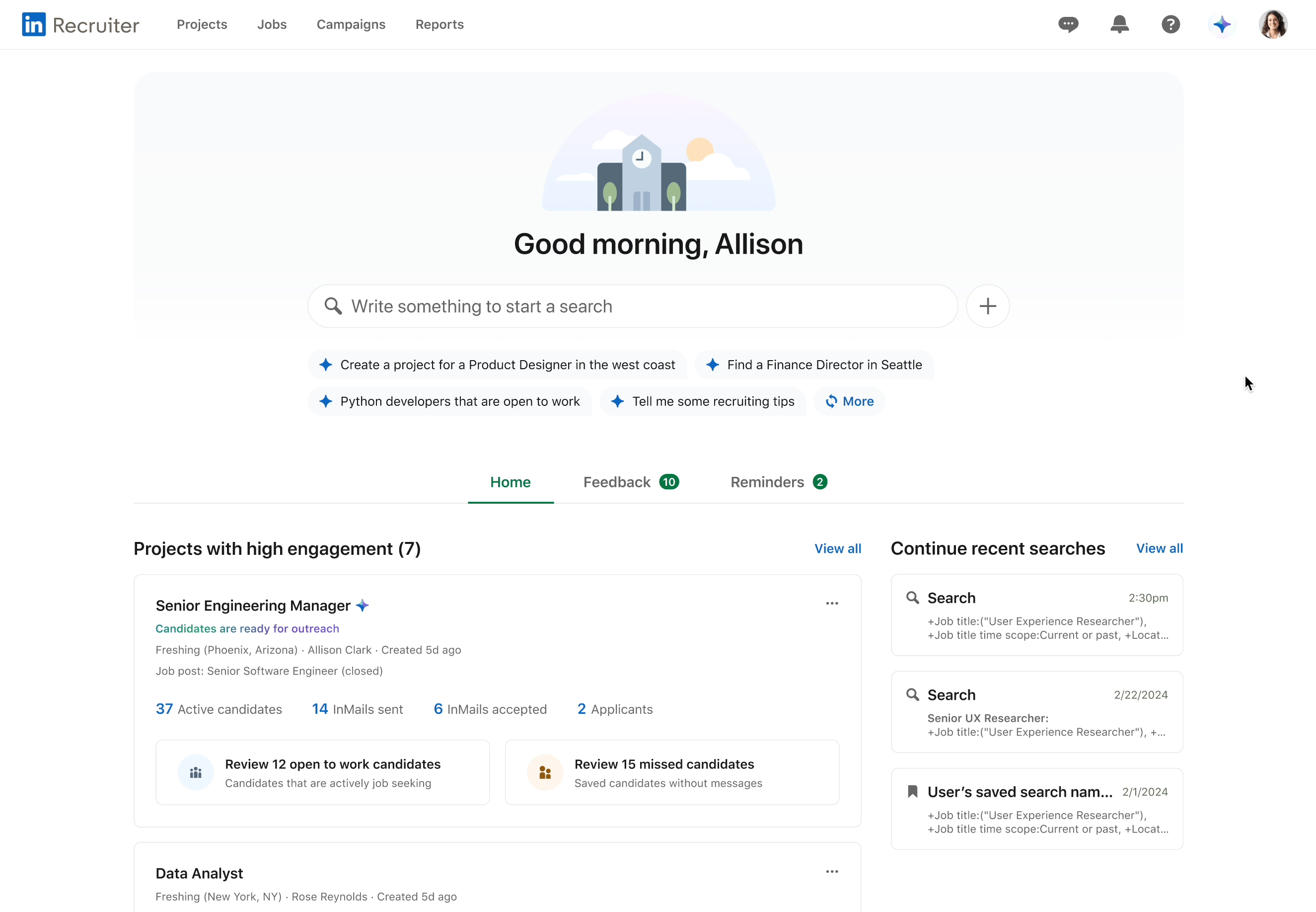LinkedIn has introduced a new artificial intelligence (AI)-powered assistant that can perform multiple recruiting tasks. The development is known as Hiring Assistant. It has been trained with data from the social network and its objective is to facilitate the work of human resources professionals at various stages of the recruitment processes.
“Today we are excited to launch our first AI agent. Hiring Assistant “It is designed to take care of recruiters’ most repetitive activities so they can dedicate more time to more meaningful tasks such as advising hiring managers, connecting with candidates and creating exceptional experiences for applicants,” says the social network.
The tool is capable of automatically creating lists of applicants based on their skills and the needs of each company. You can generate and publish job descriptions, write contact information sheets, and answer basic questions about job openings. The LinkedIn product team notes that recruiters will have the power to completely define the tasks that the assistant must perform. He anticipates that “soon” the resource will gain the ability to schedule job interviews and manage monitoring of the hiring cycle.
Hiring Assistant It is available in beta phase and at no cost to a “select group” of customers, including AMD, Canva, Siemens and Zurich Insurance. The AI agent will be rolled out more widely later next year. At the moment, it only supports processing requests in English.
Preview of operation Hiring Assistant, LinkedIn’s first AI agent trained to perform recruiting tasks.Courtesy LinkedIn
LinkedIn’s commitment to AI raises doubts
LinkedIn integrated its first AI-based features early last year. Since then it has reinforced its proposal with more sophisticated developments supported by the technology that supports ChatGPT. The service social media is owned by Microsoft, OpenAI’s main investor.
The platform’s portfolio of smart solutions includes bots personalized assistance. These help subscribers improve their applications, write cover letters, optimize their resumes, and send automated messages to hiring managers. Companies can access a series of tools to streamline the search for candidates, generate job descriptions, establish automated follow-up responses, and more easily manage their talent attraction processes.
Peter Rigano, director of product management at LinkedIn, has said that the social network “is really focused on helping recruiters and applicants’ lives be more efficient” by leveraging generative AI.
The approach has raised some questions. Discrimination is one of the main concerns in this regard. Some algorithms used in personnel selection have been found to make hasty and negative judgments about candidates who bear names associated with the black community and give preference to men.
The handling of user data has also raised concerns. Last month, LinkedIn activated by default a setting that allows the platform to use its subscribers’ information to train its own and “third-party providers” generative AI models. Data protection authorities in different markets have warned about the risks this entails. They accuse that policies of this nature are misleading and violate the privacy rights of Internet users.
Experts suggest that it is still early to know what impact the widespread use of AI systems will have in human resources areas. They admit that these solutions have the potential to optimize different processes and make the distribution of resources more efficient. Despite this, they warn that it is necessary to establish mechanisms to prevent past prejudices in recruiting personnel from being repeated.
#LinkedIn #launches #agent #recruiting



%209.46.28%E2%80%AFa.m..png?w=120&resize=120,86&ssl=1)